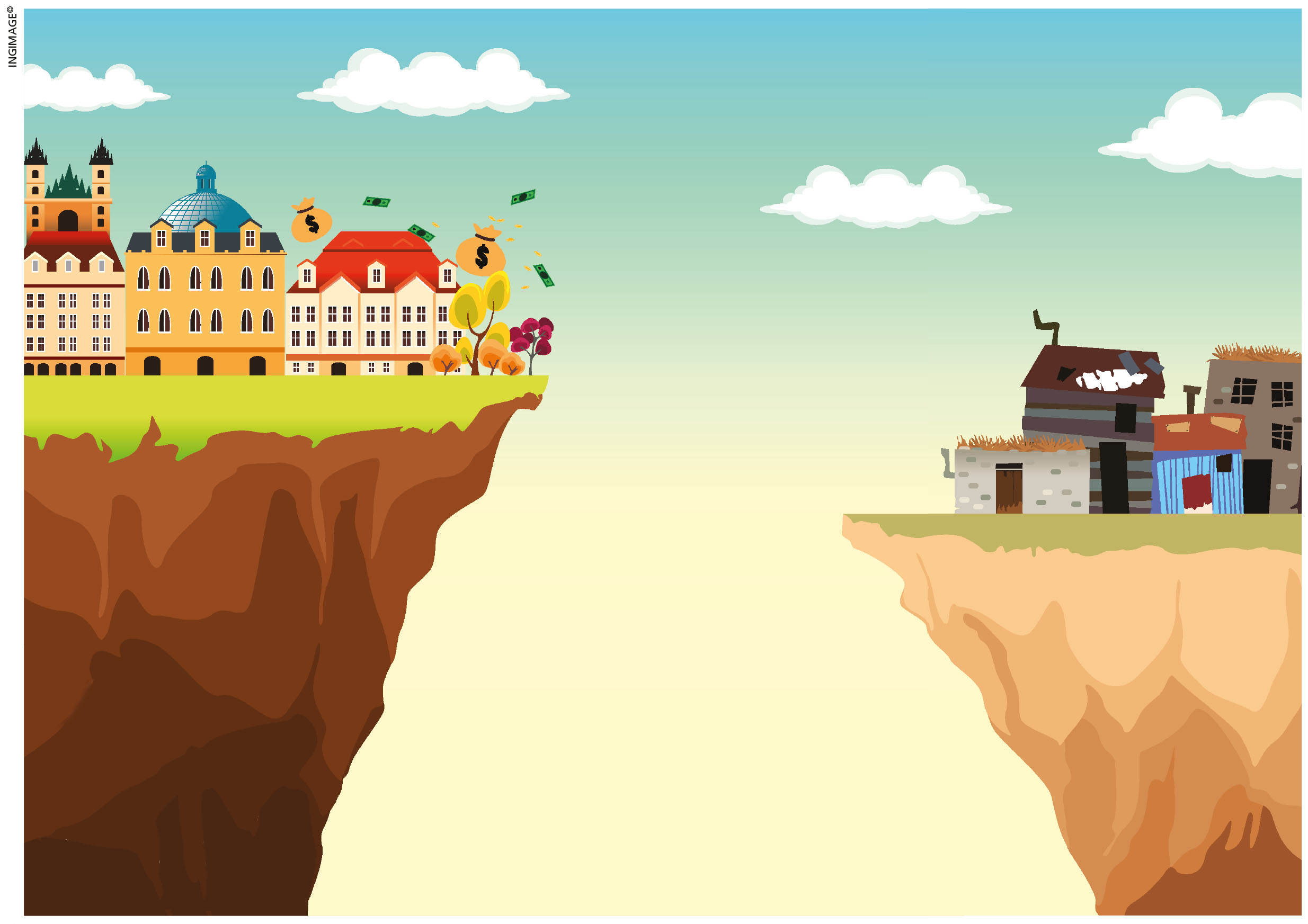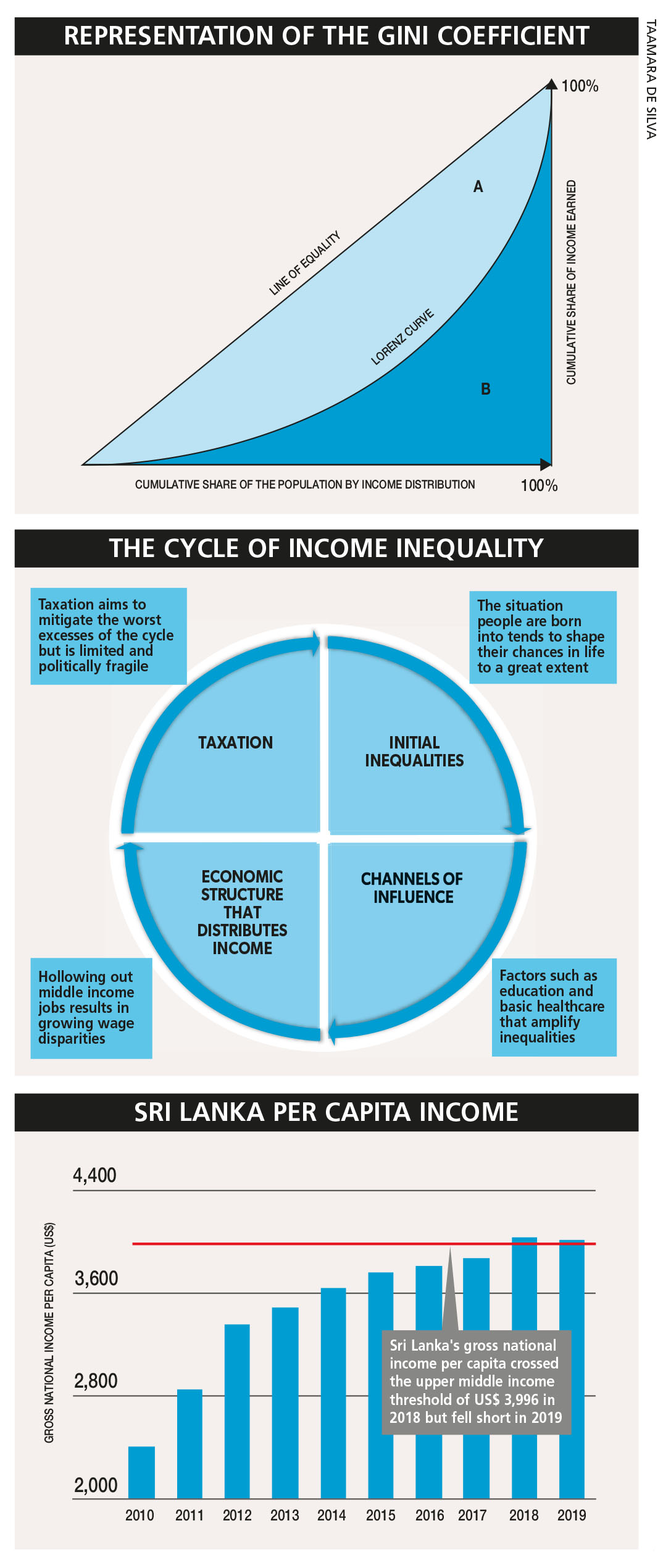THE WORLD ORDER
 THE INEQUALITY PANDEMIC
THE INEQUALITY PANDEMIC
Taamara de Silva sheds light on factors contributing to income inequality
The polarised economies and global markets of today are burdened by the deepening consequences of COVID-19. High levels of income inequality have resulted in global fragility, which is being exposed and exploited, posing multiple challenges for governments and struggling underprivileged communities.
Broadly speaking, income inequality refers to the extreme disparity in income distribution where a high concentration rests in the hands of a small percentage of the population. In other words, it refers to different people earning different amounts of money. The wider those earnings are dispersed, the more unequal they are.
Globally, this inequality is largely driven by the disproportionate ownership of capital either privately or publicly. To sum up, total public and private wealth would equal national wealth. Interestingly however, countries have become richer while governments have become poorer over the years.
The trend is more visible in China and Russia, following the transition from communist to capitalist oriented economies. The massive increase in the number of billionaires from Southeast Asia bears testimony too.
Conversely, net public wealth (public assets less public debt) has declined since the 1980s. This has limited the capacity of governments to regulate economies and redistribute income proportionately – the only exception being countries rich in oil and natural reserves or massive sovereign wealth funds as in Norway.
Today’s global inequality is the consequence of 200 years of unequal progress. The richest one percent was able to capture 27 percent of cumulative global wealth over the last two centuries. Forbes counted 2,095 billionaires in its most recent rankings in March. Meanwhile, approximately 10 percent of the population lives on less than US$ 1.90 a day, according to the World Bank.
The widely used summary method of calculating income inequality is known as the Gini coefficient. A value of zero corresponds to precise equality; and one corresponds to total inequality. Cumulative shares of the population and income are depicted on the horizontal and vertical axes respectively.
In an unequal society, the Lorenz curve swoops below the 45 degree line and converges with it at the end, splitting the areas into A and B. The further a curve deviates from the perfectly equal straight line (which represents a Gini coefficient of zero), the higher the Gini coefficient and less equal the society.
So what can we expect going forward?
‘Business as usual’ will only widen the income gap. The rich will amass more wealth by dominating industries and thereby entire economies.
Improvements in technology have created a disproportionate distribution in newly generated income. Highly educated workers enjoy a greater share of the rewards. Access to quality education – especially in developing economies – has been cited as a main contributor to income inequality.
Meanwhile, specific dynamics of compensation – particularly for the C-suite – continue to widen the gap while economies of scope and scale have seen wealth creation, and transfers in and around large corporates and monopolies. The situation in Sri Lanka is no different.
We were barely classified as an upper middle income economy last year, only to be downgraded to lower middle income amid a contraction in GDP growth. Inadequate opportunities in rural districts is a major reason for the gaps in income. A lack of infrastructure especially in connectivity has resulted in unequal opportunities for employment, quality education and access to public services.
Agriculture is the sole source of income generation for approximately 27 percent of the population. Yet, frequent natural disasters such as floods and droughts have led to uncertainty in recent years. This dependence has far-reaching consequences and remains a major reason for inequality.
Another critical factor is the low female labour participation of approximately 36 percent of the workforce. The inadequacy of decent employment opportunities and social protectionism has acted as a deterrent in the past. Moreover, the rapidly diminishing power of labour unions is another culprit fuelling further inconsis-tencies in organisations.
Recognising the importance of reducing these income gaps, the 2030 Agenda for Sustainable Development prioritises curbing inequality as a standalone goal as well as a crosscutting issue.
What must be understood is that COVID-19 is a human tragedy. But it has also created a generational opportunity to build a more equal and sustainable world, where education and digital technology must be two great enablers and equalisers, by providing lifelong opportunities on how to learn, adapt and take on new skills for the knowledge economy.
As Sir Tony Atkinson once said, “if we are concerned about equality of opportunity tomorrow, we need to be concerned about inequality of outcome today.”







Leave a comment